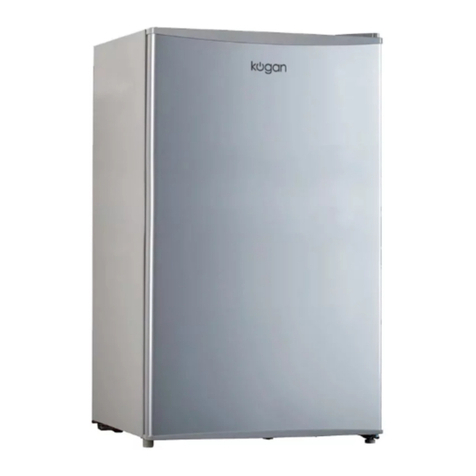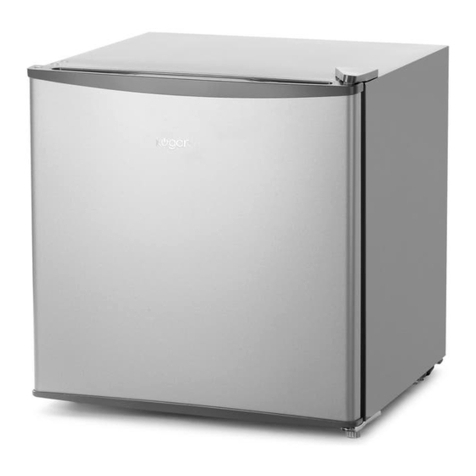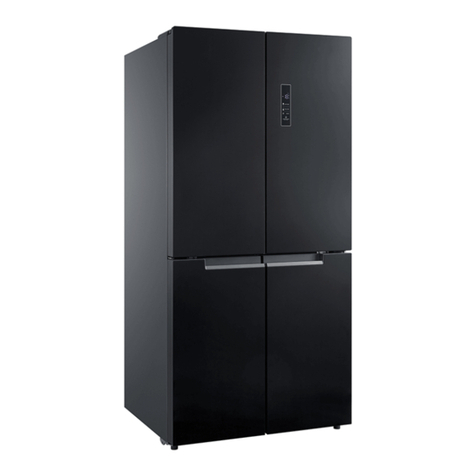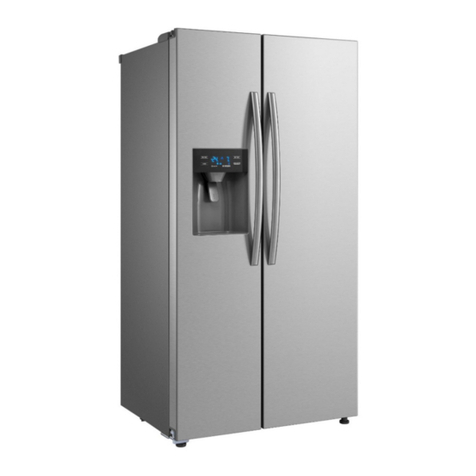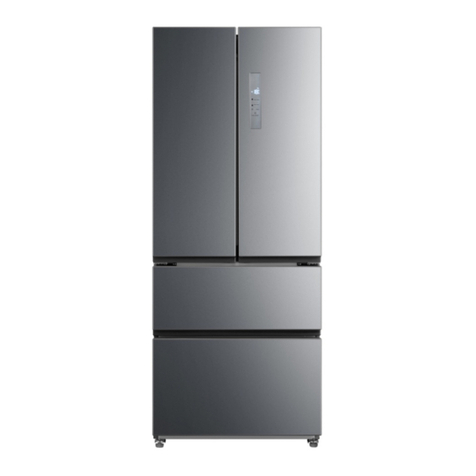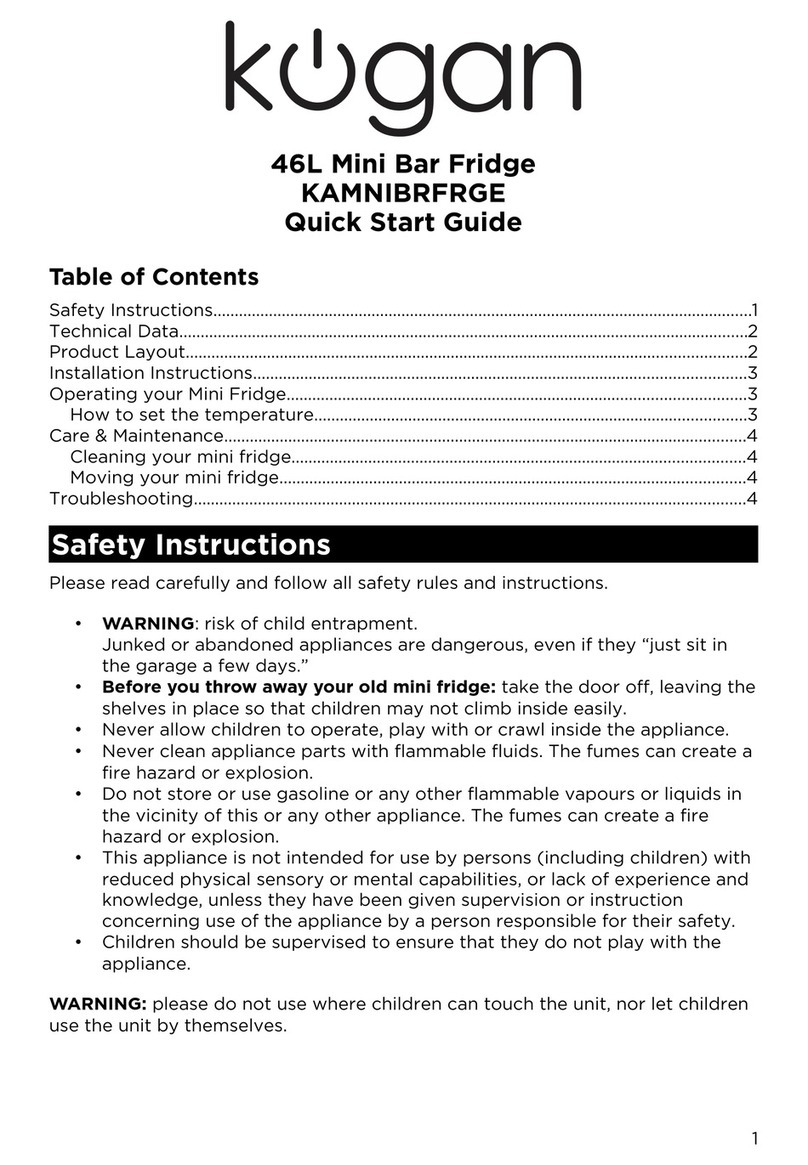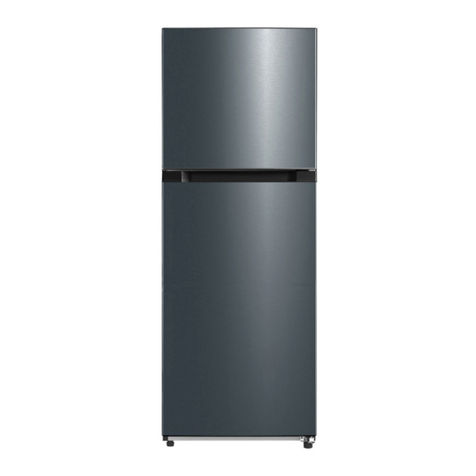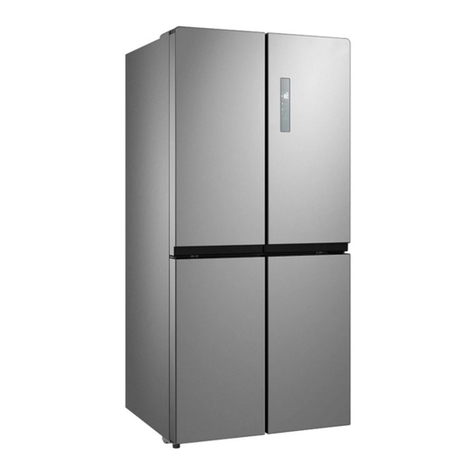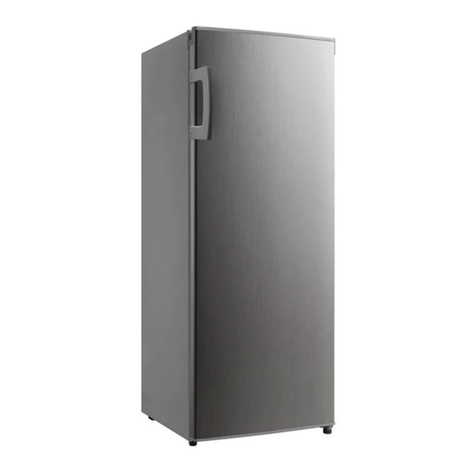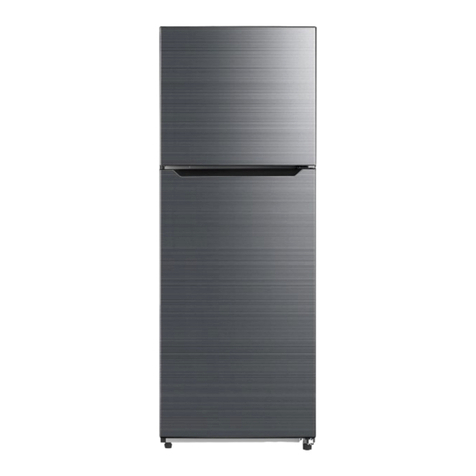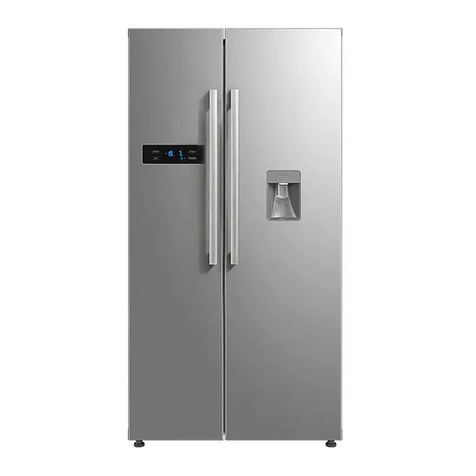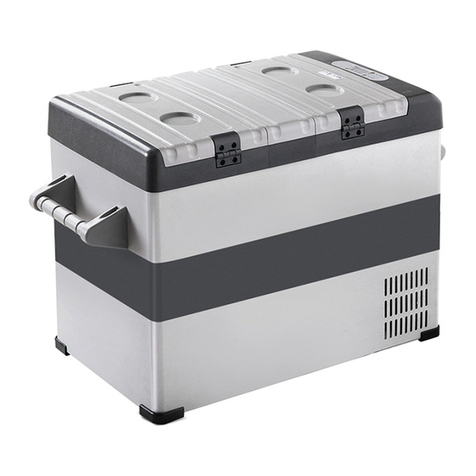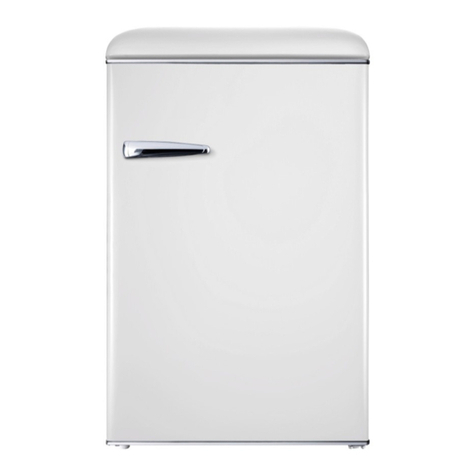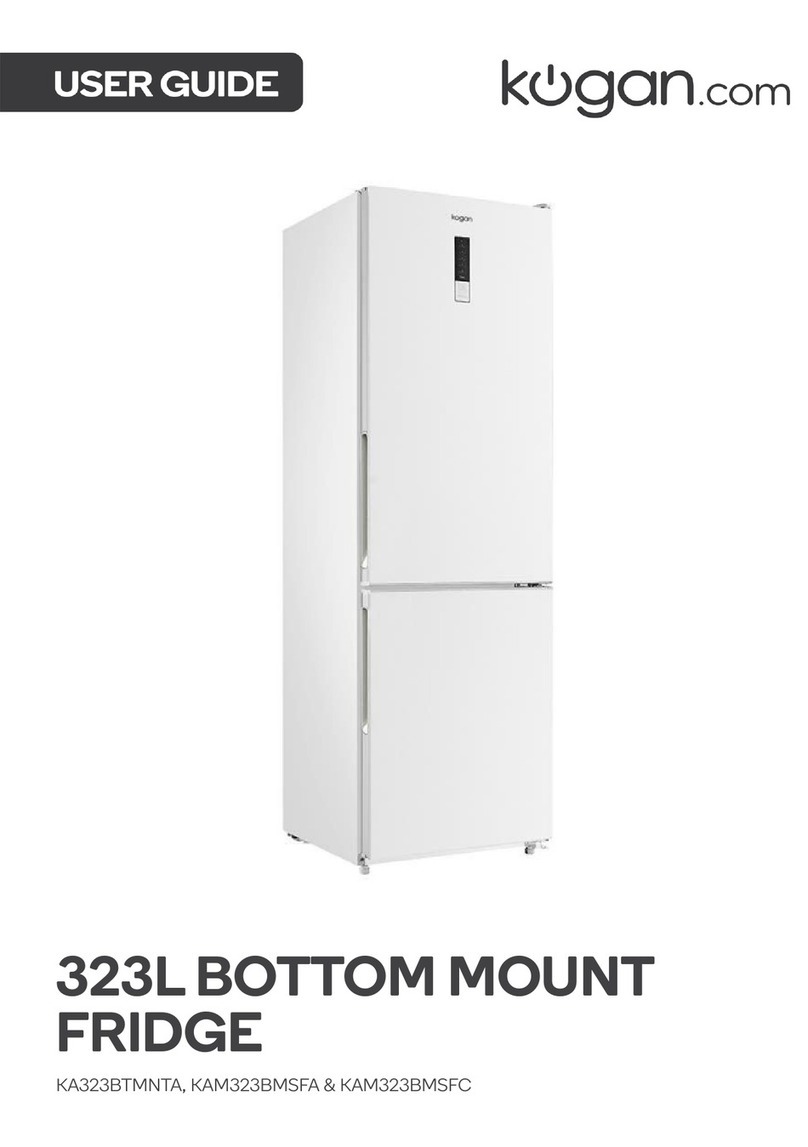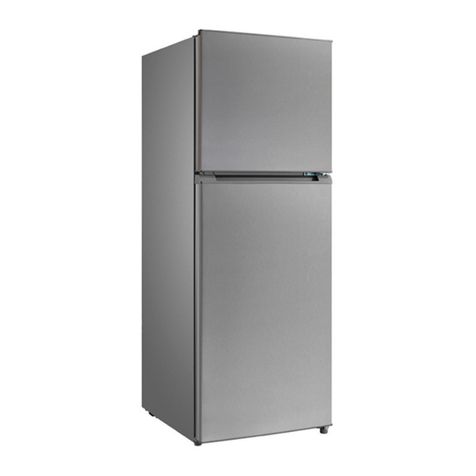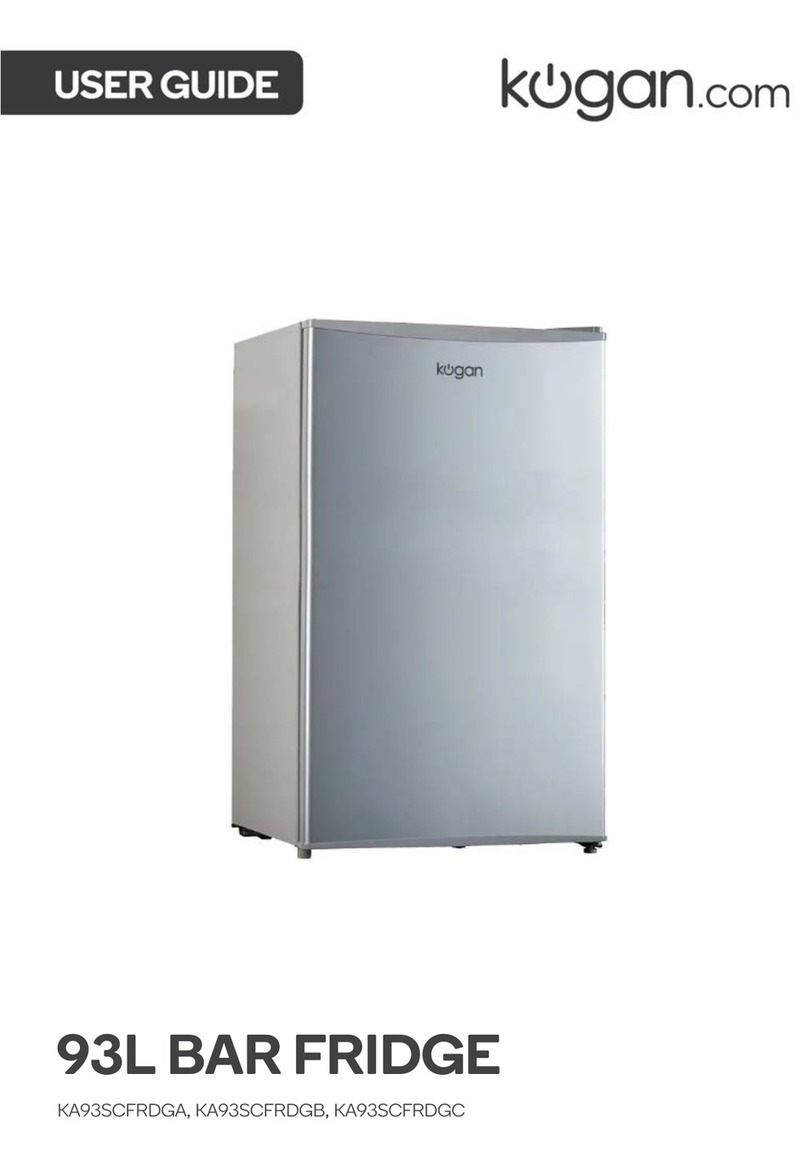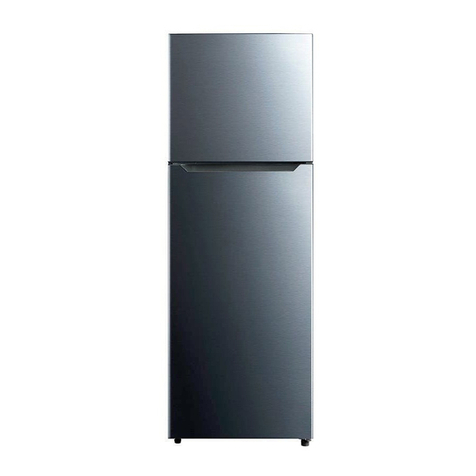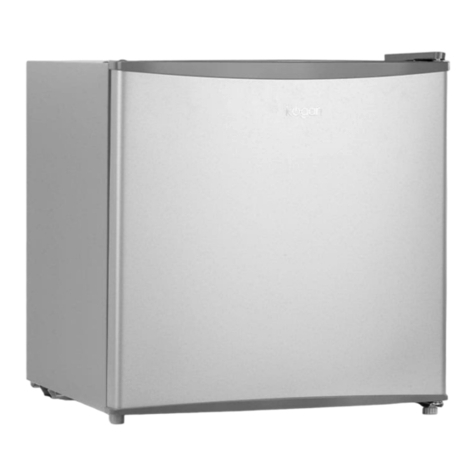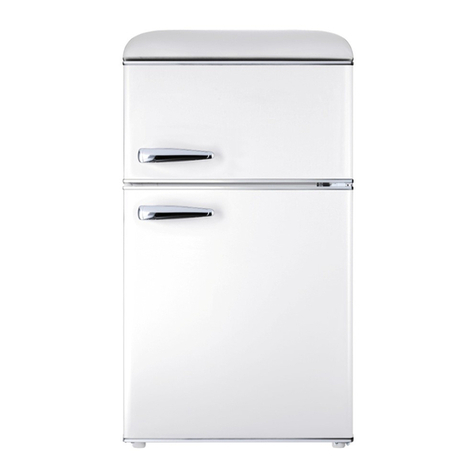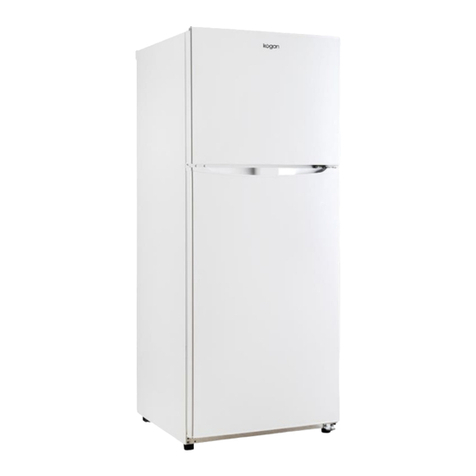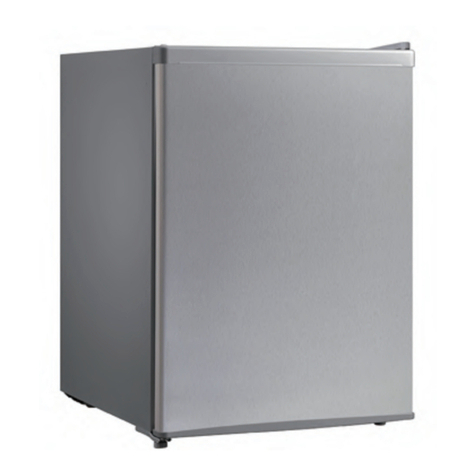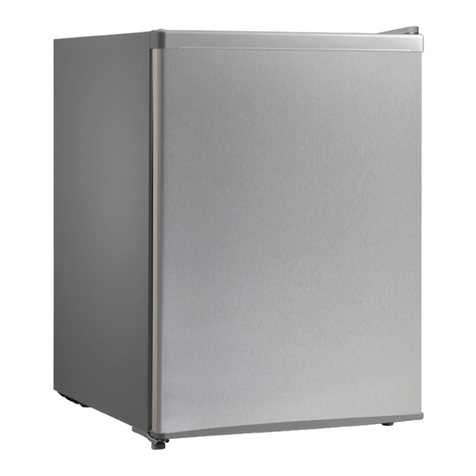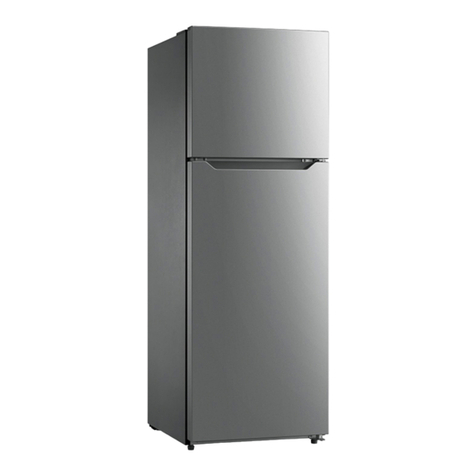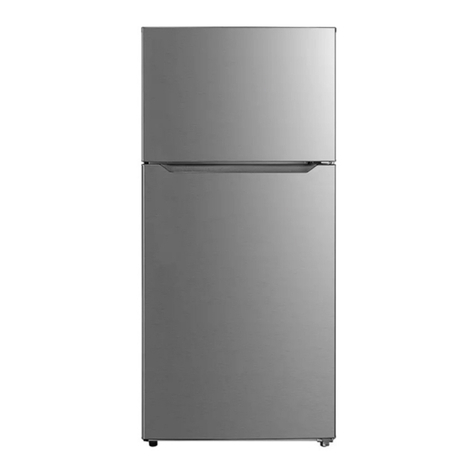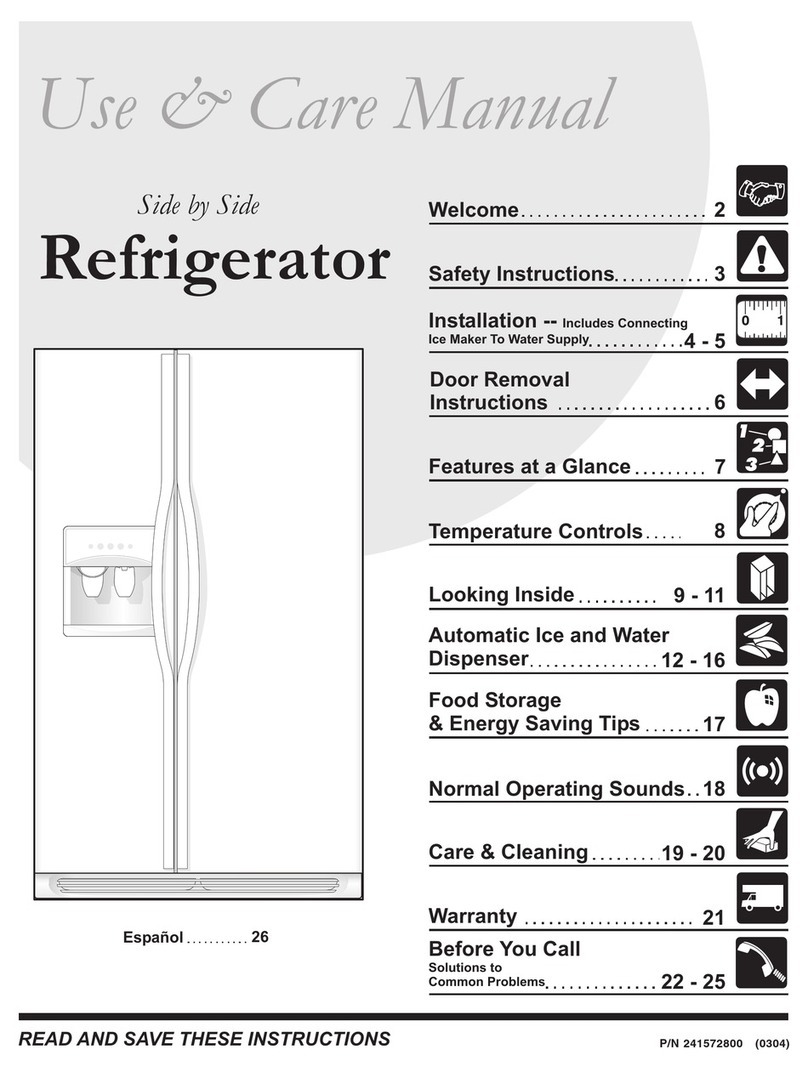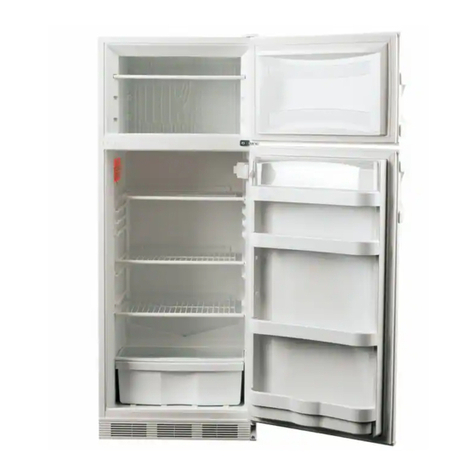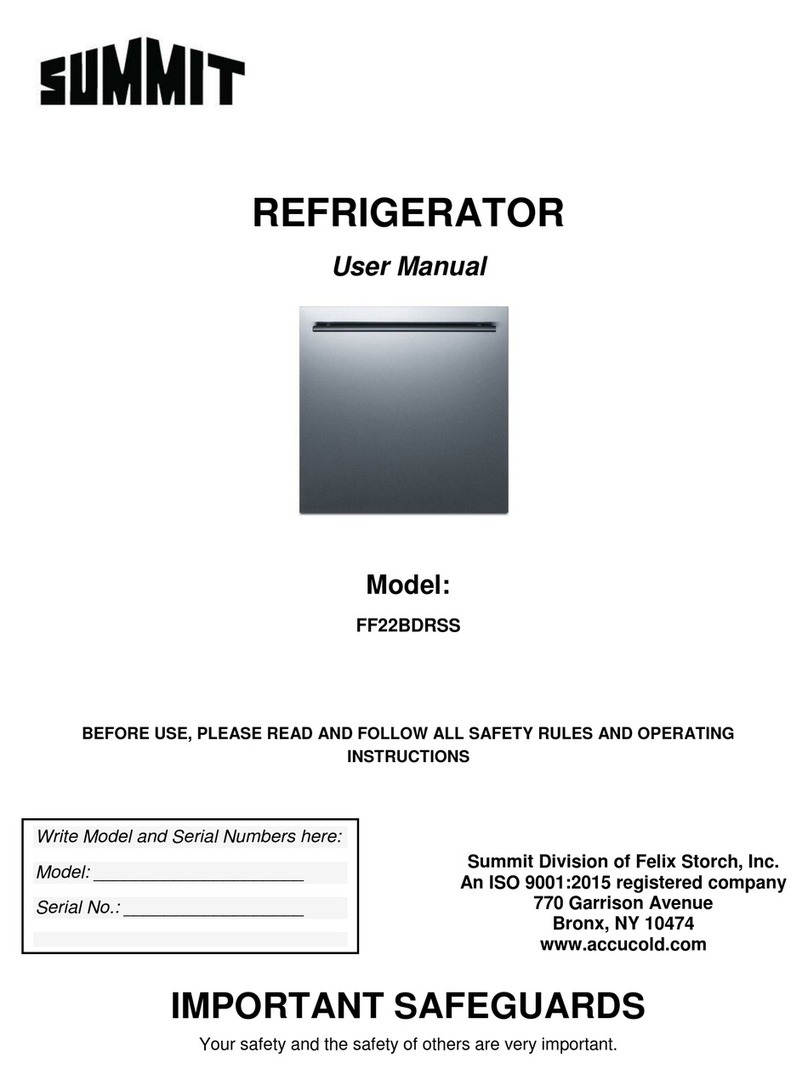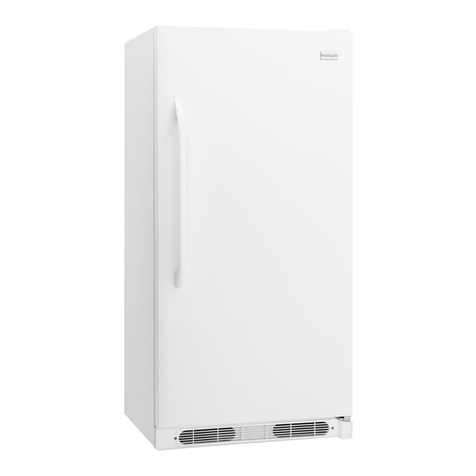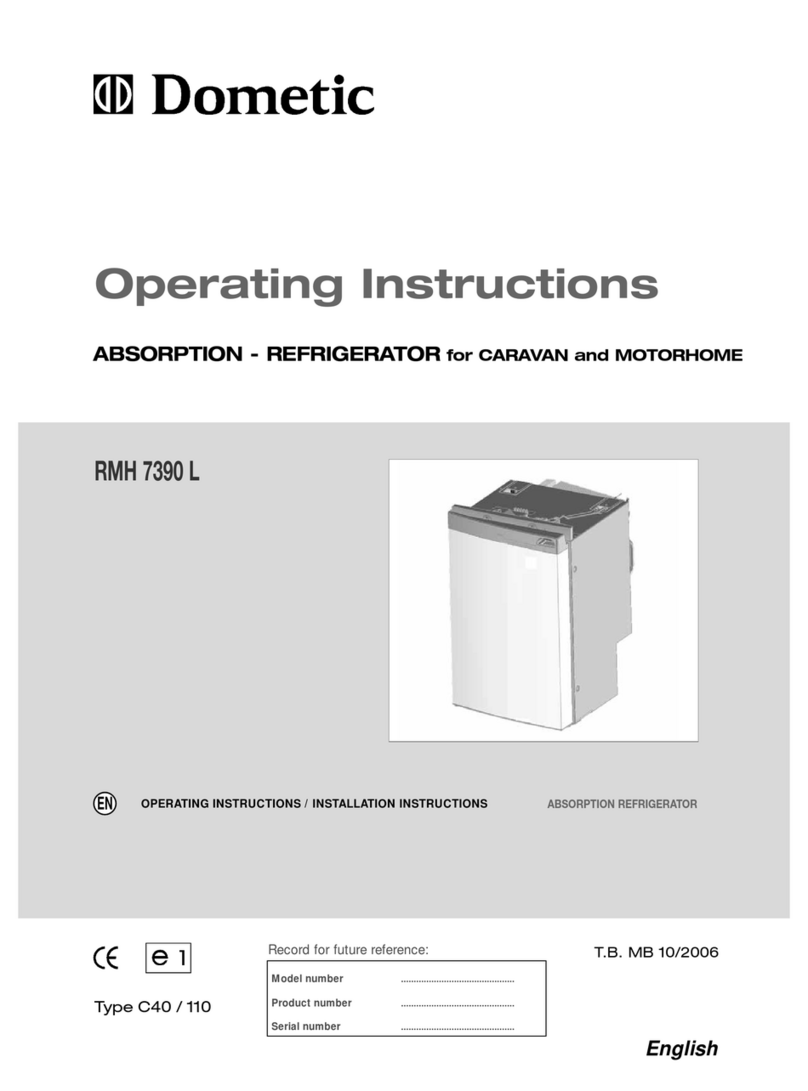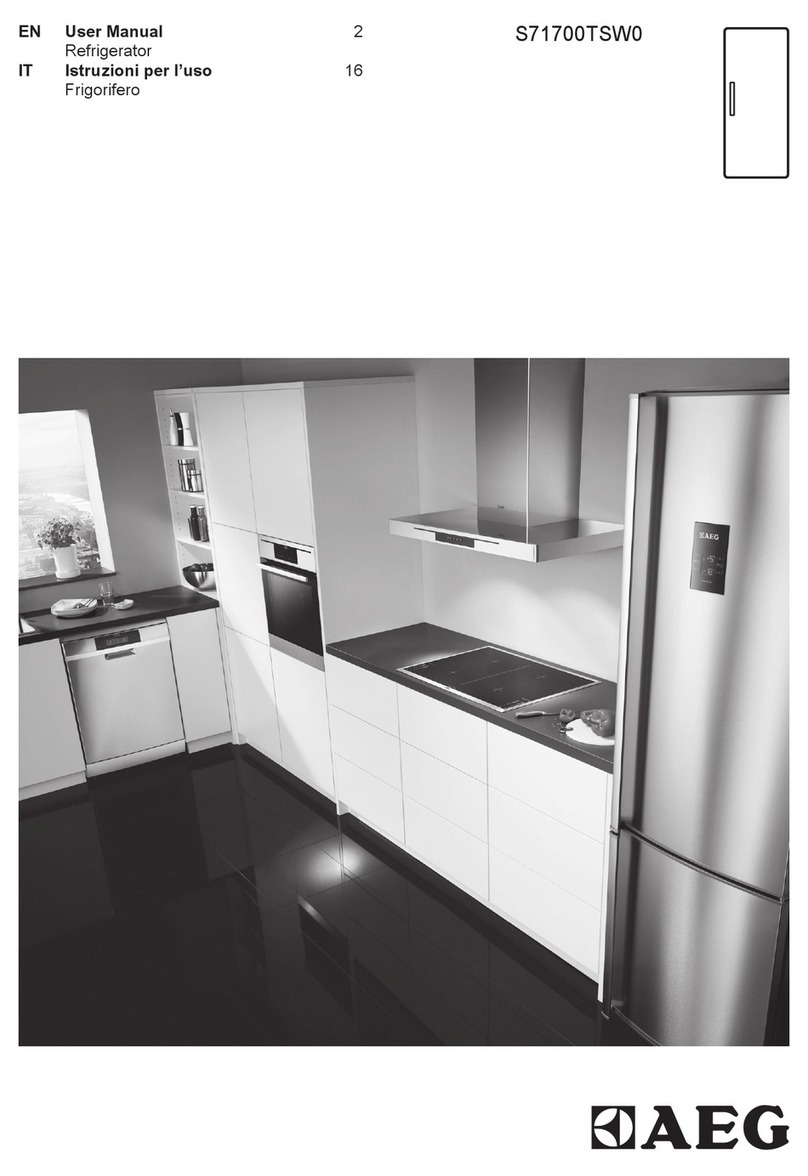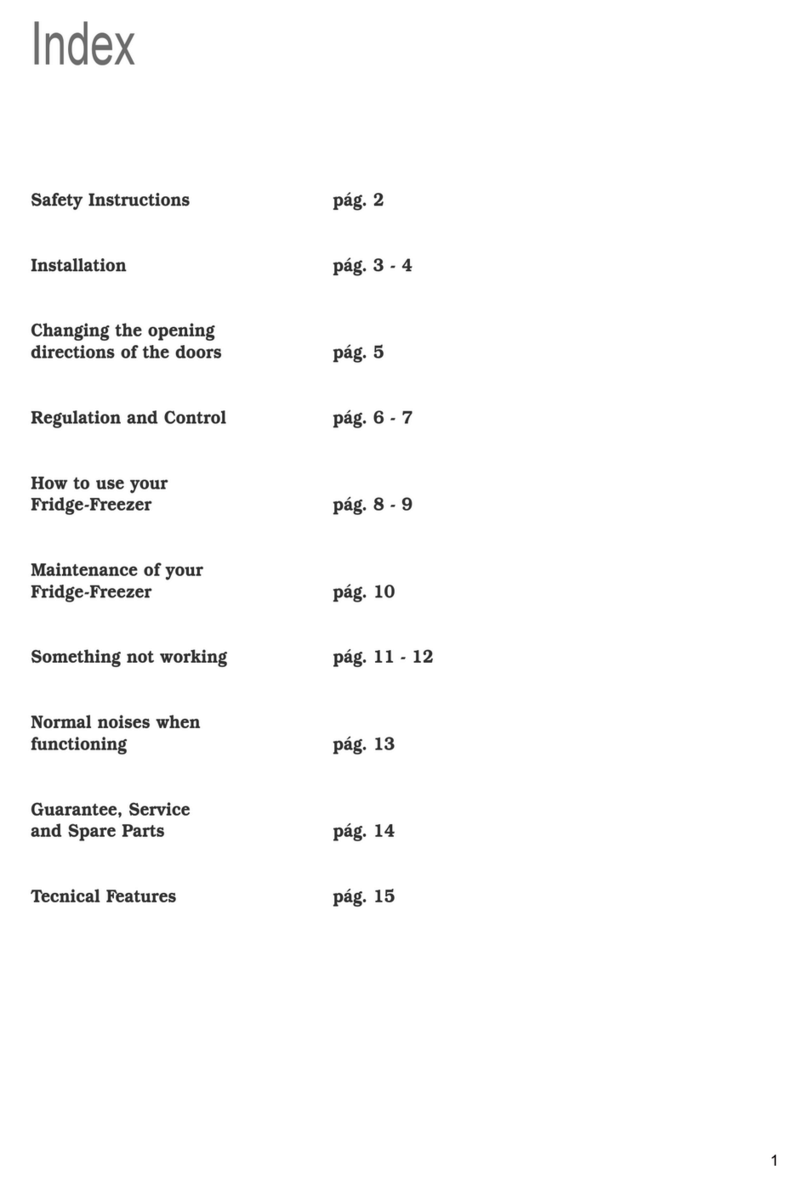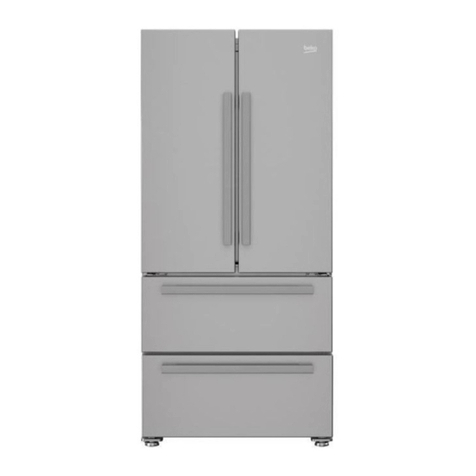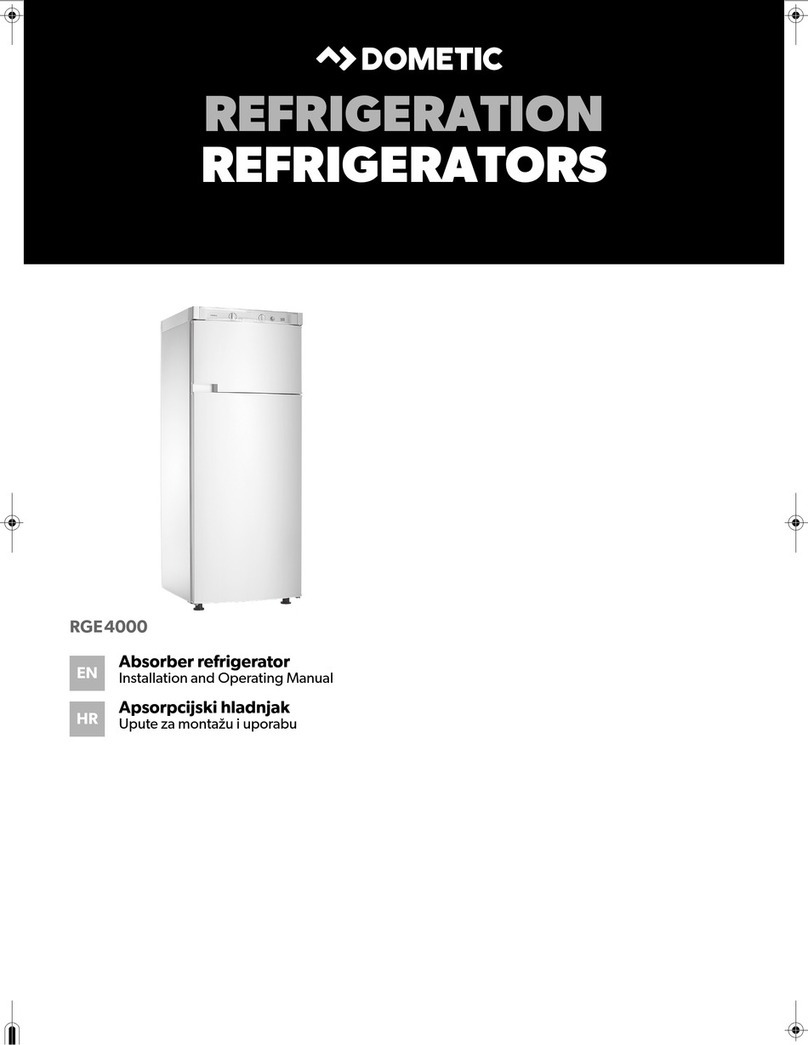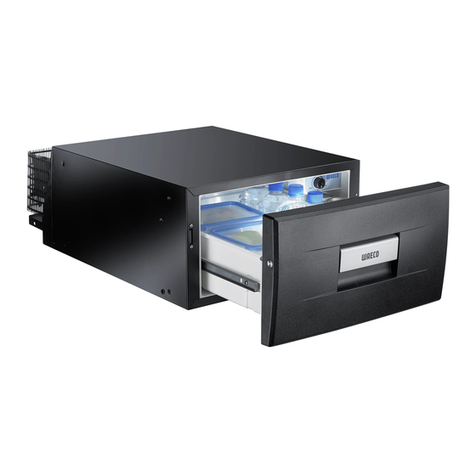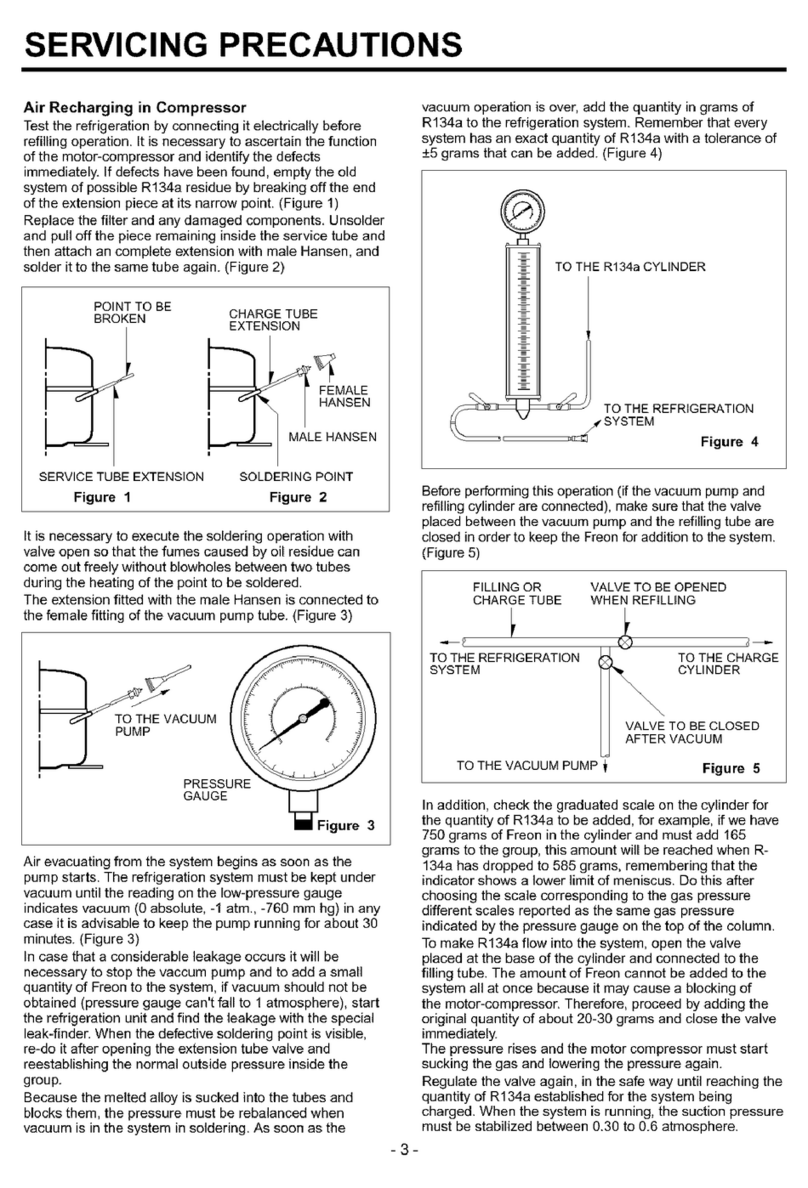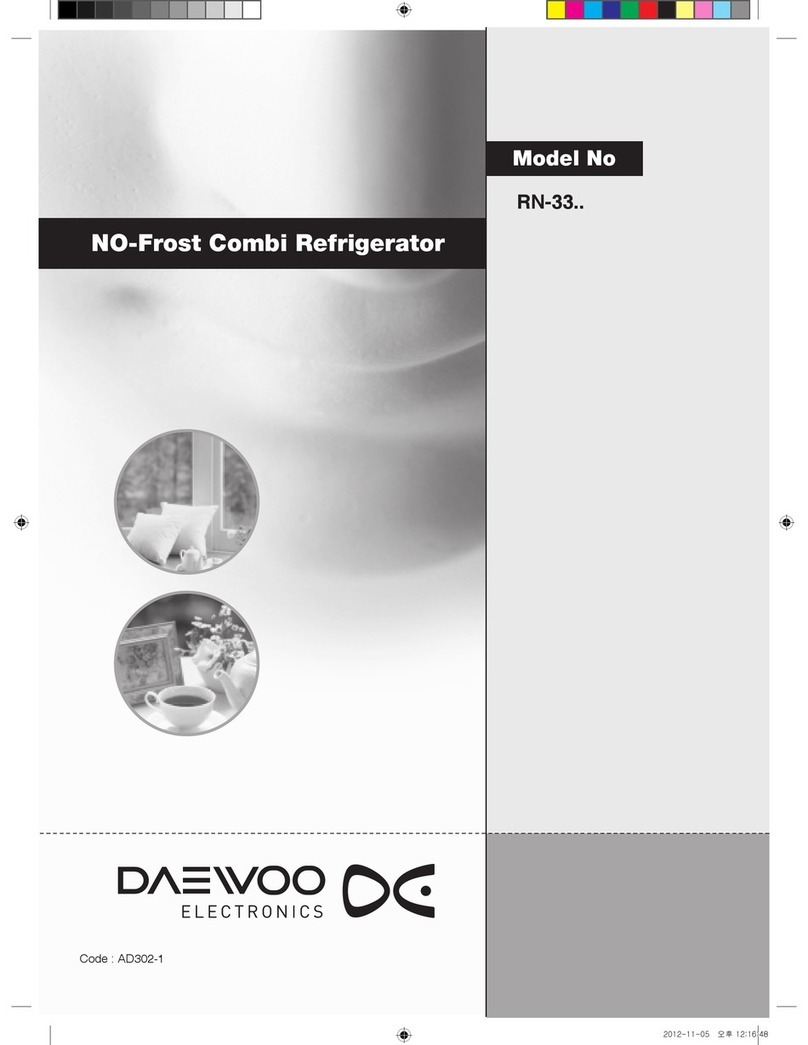
4
DANGER Risk of child entrapment. Before you throw away your old refrigerator or freezer:
•Take off the doors.
•Leave the shelves in place so that children may not easily climb inside.
•The refrigerator utilises an alternating current supply (220-240V /50Hz). If large voltage
fluctuations occur (outside the scope of 198-264V), it may cause failures such as the
refrigerator failing to start, burned-out internal components, the compressor producing
abnormal noises etc. If this occurs, you must install an automatic voltage regulator
rated at above 1000W for use.
•Do not cut off or remove the third pin of the power plug under any circumstances.
•The power plug must be firmly secured in the wall socket to avoid the risk of fire.
•Do not pull the cable to unplug the refrigerator from the wall socket. Hold the plug
firmly and pull out the plug from the socket directly.
•Do not allow the power cable to become pinned by the refrigerator or trampled by
people. Do not use damaged power cables or plugs; if you note any damage to the
cable or plug, please contact Kogan support.
•This appliance can be used by children aged from 8 years and above and persons with
reduce physical sensory or mental capabilities or lack of experience and knowledge if
they have been given supervision or instruction concerning use of the appliance in a
safe way and understand the hazards involved.
•Children shall not play with the appliance. Cleaning and user maintenance shall not be
made by children without supervision. Children aged from 3 to 8 years can load and
unload refrigerating appliances.
•WARNING: To avoid a hazard due to instability of the appliance, it must be fixed in
accordance with the instructions.
Warnings for placement
•Do not put flammable, explosive, volatile and highly corrosive items in the refrigerator
to prevent damages to the product or fire accidents.
•Do not place flammable items near the refrigerator to avoid fires.
•The refrigerator is intended for household use, such as storage of foods; it shall not be
used for other purposes, such as storage of blood, drugs or biological products, etc.
WARNING: The R600a refrigerant and cyclopentane foaming
material used for the refrigerator are flammable. When the refrigerator
is disposed of, it must be kept away from any fire source and be
recovered by a specialist agency with corresponding qualifications to
prevent damage to the environment or any other harm.
